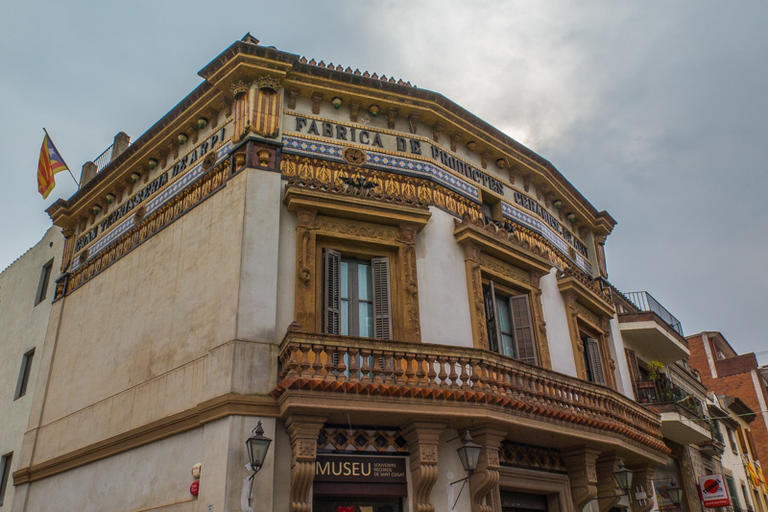
Introduction
The Arpí’s Pottery shop is popularly known by the name of "Cal Gerrer". It is a project by Francesc Arpí that was completed in the mid-19th century. The grandson Pere Arpí Massana would continue with the potter'spottery tradinge until the civil war began. The production center would remain important until 1945.
It is an urban house with several floors of houses. The facçade maintains a symmetrical composition scheme with a clay balustrade balcony where there is zoomorphic and vegetal decoration in the limits of the balcony windows of the floor made with batter. The upper floor contains ornamentation with ceramic elements (corbels, lily flowers ...) from the Arpí factory. On top of the balconies are two glazed ceramic bats.
Cal Gerrer is like an open-air museum where the most varied forms and materials produced by the house are displayed, all made of clay and fired, many of the pieces with an artistic quality that exceeds the simple qualification with varnishes or simple terracotta, makes the facçade absolutely eclectic, without being able to define a specific style. Although it is not modernist, then, this house interests us especially. You have tomust stop and look carefully at the different pieces. Three generations of “Arpí’s” were dedicated to the production of ceramic objects, both domestic and for architectural decoration. Many of the ceramic elements that were made in this building are distributed in different houses of the town and, of which, although there is no well-defined or established catalog.
The large side-by-side balcony of the main facçade stands out for its volume, very eclectic, which can be accessed through three symmetrically distributed openings. The panels are square with floral elements, the curled snakes on the jambs, the fat black bat that crowns the lintels.
One of the most unique anecdotes about this building is that the Consul of Cairo decided to take up residence on the first floor, which was the largest and most luxurious. As Frederic Cabanas explains in his book "Sant Cugat, origins and stories of a people and a family" this filled with pride the well-known Peret Gerrer (Pere Arpí Massana), who also boasted of having welcomed a Kking whose Name. In Frederic Cabanas he also explains that during his visit, this Kking had the need to go to the bathroom. That is why it was known in the town as the royal basin, the largest and most luxurious commune in town that was the size of a dining room.
Since 2006, the building has undergone a long restoration process. After many years of being in a dilapidated and decaying state, the building has recovered all its splendor.
In addition, the interior has been restored into a museumized, which and holduses three permanent exhibitions and aone temporary one. The first part tells the story of the Arpí family and explains the history and production that the factory had. The second part shows the life and the historical-artistic legacy of the Cabanas-Alibau brothers, who had a great relevance within the local artistic world. Finally, you can see the exhibition dedicated to Marilyn Monroe, which shows a large number ofmany objects and books belonging to one of the most important icons of the 20th century, the result of more than 35 years of collecting by Frederic Cabanas.